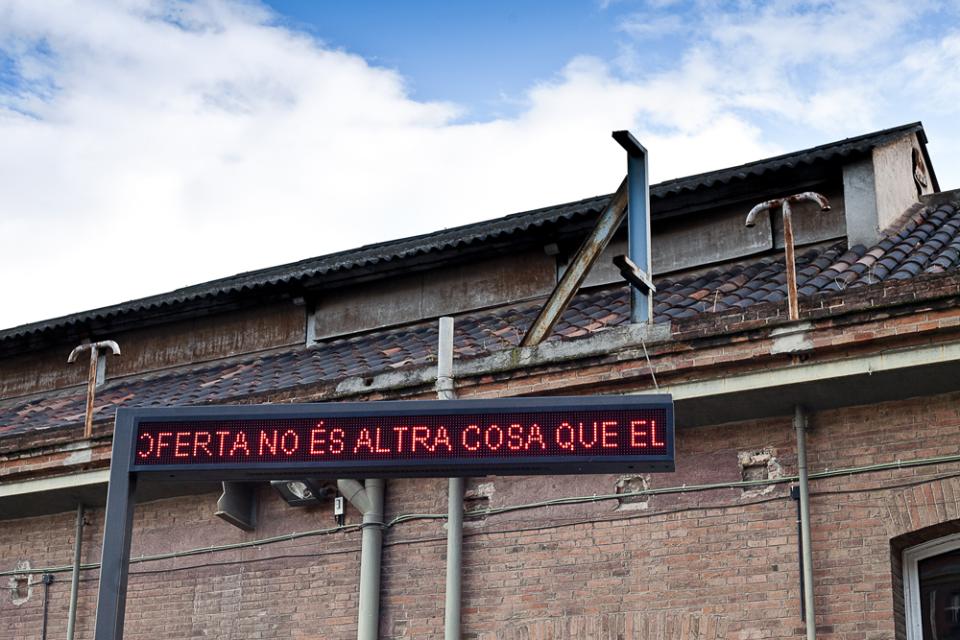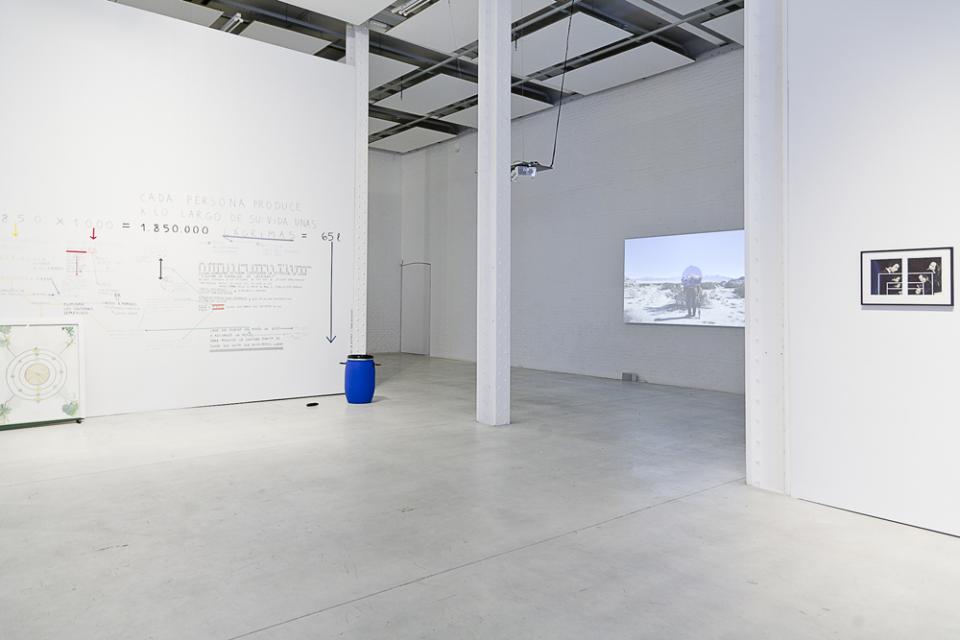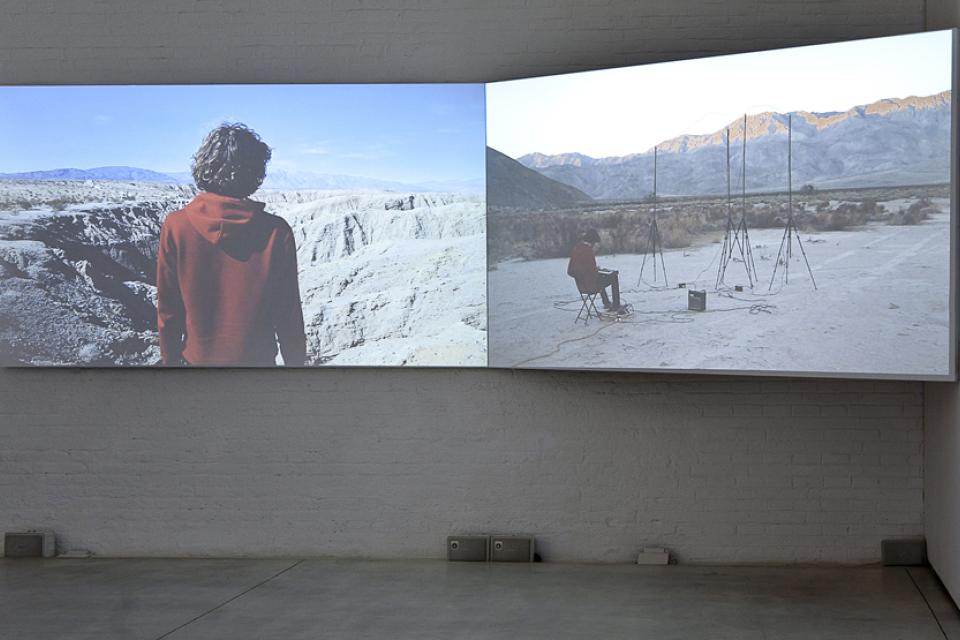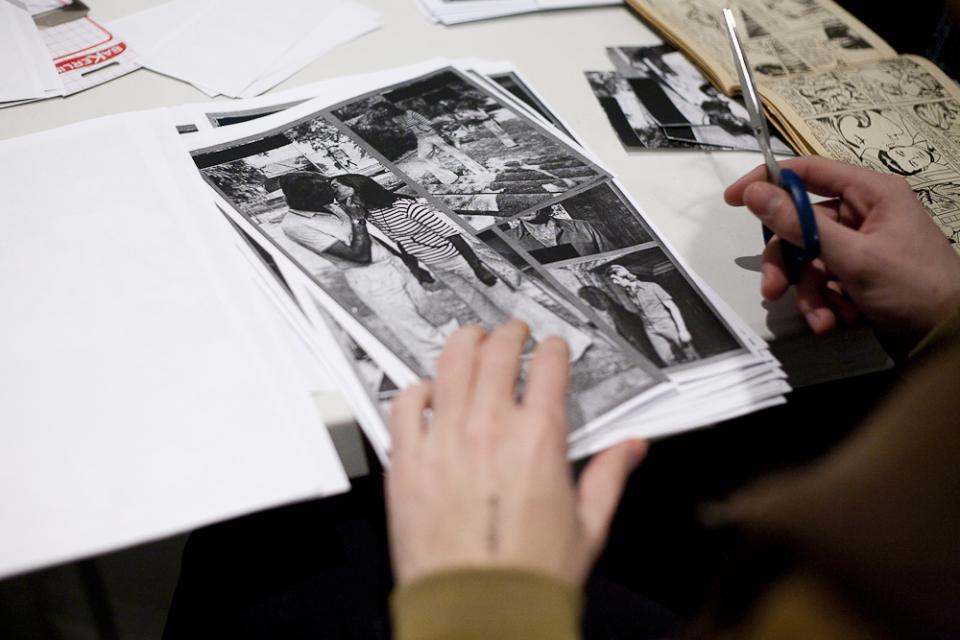Chapter I. Chronicle. Narrative, History and Subjectivity
DIANA ARTUS / PATRICIA ESQUIVIAS / AURÉLIEN FROMENT / ANA GARCÍA-PINEDA/ TORIL JOHANNESSEN / PERE LLOBERA / ANTONIO ORTEGA / RICHARD T.WALKER
+ Raymond Pettibon / Josep Ponsatí / Àngels Ribé
Curated by David Armengol and Martí Manen
I. Chronicle: Narrative, History and Subjectivity is the first chapter of The Text: First Notions and Findings, an exhibition program focusing on the role of writing in art. Like a literary simile, the program takes a structure inherited from the structure of a book: a prologue, three central chapters and an epilogue. Each chapter is dedicated to a specific way of understanding the story through artistic practice, something that offers three possible emotional relationships between art and its immediate surroundings through an exercise in conceptual correspondence between the person writing and the person reading. First is the chronicle as the subjective transmission of an event. This is followed by the flexibility of the fictitious story (II. Escapes: Fiction as Rigor. March–May). And lastly is the strong and direct commitment exhibited by the manifesto (III. Manifesto: Art Today Facing Doubts. May–July).
As a type of text, the chronicle involves the narration of a situation. Using a time, using a specific position, the chronicle reflects a history sensitive to veracity, a story emerging from reality and experience that involves a degree of subjectivity in the ways of narrating and transmitting events. Individual and singular forms that in turn take on a more prominent, more solemn challenge: the ability to present to others what is before us, what surrounds us and what we believe should be related.
In a direct (first person) and indirect (third person) way, lived experience entails the chronicle having something ambulatory, something trawling, something investigative and also something critical—a human factor that invites numerous possibilities for redefining what happened, an experience that generates different perspectives, attitudes and emotional reactions. Ultimately, it is an impulse that begins in the person observing and narrating to then be addressed to the people who receive and interpret it through their own personal or collective identity.
Using records as different as writing, oratory, image, object, sound and action, the narrative exercise is standard in and even inherent to the artist’s condition throughout the entire history of art. A work of analysis and speculation about reality—more romantic and dysfunctional in some cases, more activist and practical in others—that leads to approaches to the immediate environment capable of breaking free from the strict parameters that dominate our everyday life. And therein lies the power of the artist-chronicler figure: in his ability to have a critical influence by dispensing with established rules insofar as he/she deems fit while at the same time maintaining contact with what is real.
I. Chronicle: Narrative, History and Subjectivity has different ways of dealing with artists’ status as chroniclers of the present. Flexible and free narratives that in one way or another turn the exhibition into a collection of fragmented stories where words, images and objects function as a text extended in time. A text that the user reads through his movements.








